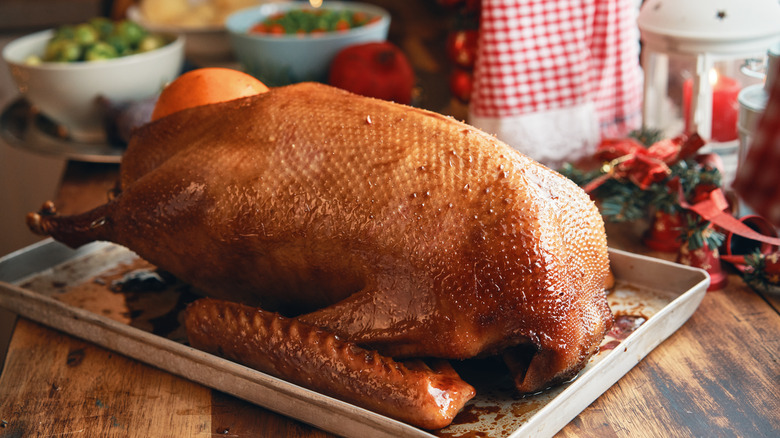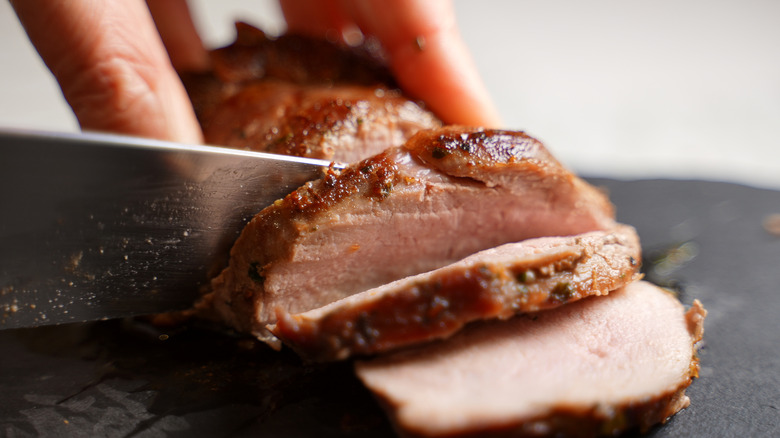How To Tackle Roast Goose For Even Browning
If the thought of roasting an entire goose is one that intimidates you, you're not alone. Goose is not a mainstream meat in the way chicken, turkey, and, to a certain extent, ducks are. Instead, goose is something that tends to be reserved for rare or special occasions, like Christmas. Still, that doesn't mean you shouldn't give roast goose a try.
Like their fellow waterfowl, geese are not lean birds. They have incredible stores of fat, which are excellent for flavor and crispiness. However, the fat can bring about a very overwhelming taste if the bird is not cooked properly. As a goose is all dark meat, you're bound to get a more gamey and deep flavor. To achieve this, you are going to roast a goose differently than you would a chicken.
You want to aim for medium-rare with a roast goose. That little bit of pink brings with it optimal flavor and juiciness. However, it is difficult to achieve a browned and even roast with a goose because the breast and legs reach finishing temperatures at different times. Chances are, if the legs are cooked, the breast is dry and dull. So, while it's a more labor-intensive process, removing the breasts halfway through roasting and finishing them with a pan sear is the key to an evenly browned, and evenly roasted bird.
Why the breast cooks faster than the legs
The breast and leg meat of a goose are very different from one another. Much the same as ducks, goose breasts are naturally more tender, while the legs are muscular and filled with tendons that require longer cooking times. If you intend to keep the bird whole throughout the roast, you'll have to make a choice. Either cook for the breasts, in which case the legs will still be relatively raw and tough, or cook for the legs, in which case the breasts will be chalky and dry. This is why it pays to make a small presentational sacrifice by removing the breasts midway through roasting.
About 40 minutes in, check the temperature of the breast meat. It should read between 130 to 140 degrees Fahrenheit. Remove the breasts by making incisions at the joints where the legs and wings meet the breast, then cut down the central keel, and follow the backbone with your knife. The breast will fall away whole. You then return the goose, sans breasts, to the oven to finish off the legs, which should take another 30 to 40 minutes.
Once the legs are done, give the breasts a good pan sear, skin side down, to finish cooking the meat. Repeat this process with the legs and wings. The results should be an evenly roasted bird, with juicy breast meat, fall-off-the-bone legs, and crispy skin.

